Blog
History of The Omega
The first-ever watch brand to travel to the moon.
The watch that appeared on the wrist of one of the most famous agent in the world – James Bond.
The one that also officially used in the Olympic Games.
From being worn by global politicians such as John F. Kennedy, Kim Jong Un, Mao Zedong, King Felipe VI to well-known celebrities such as: Jeff Bezos, Tom Hanks or George Clooney. All of these special details lead us to one of the greatest Swiss watchmakers of all time
The Omega.
In this article, let’s learn with Hoa Sa about the history behind the success of the Omega brand – one of the most famous and greatest watchmakers from Switzerland.
Originated from a passion for precision
Omega SA or simply Omega, started as a small manufacturing unit in 1848 in the town of La Chaux-de-Fonds, Switzerland. It was in the family mansion, that the 23-year-old Louis Brandt founded his own company with the original name of La Generale Watch Co. By 1903, the company was officially renamed Omega Watch Co. and later Omega SA.

Omega’s founder at the time, Louis Brandt, was a pocket watch maker and highly passionate about the precision of timepieces. To him, the luxury and talent of a watchmaker would be meaningless without the precision of his products. Therefore, both Brandt and Omega focus on quality, absolute precision on their watches. Within a few years, his reputation for high-quality, high-precision watches was established in Switzerland, and later throughout Europe.
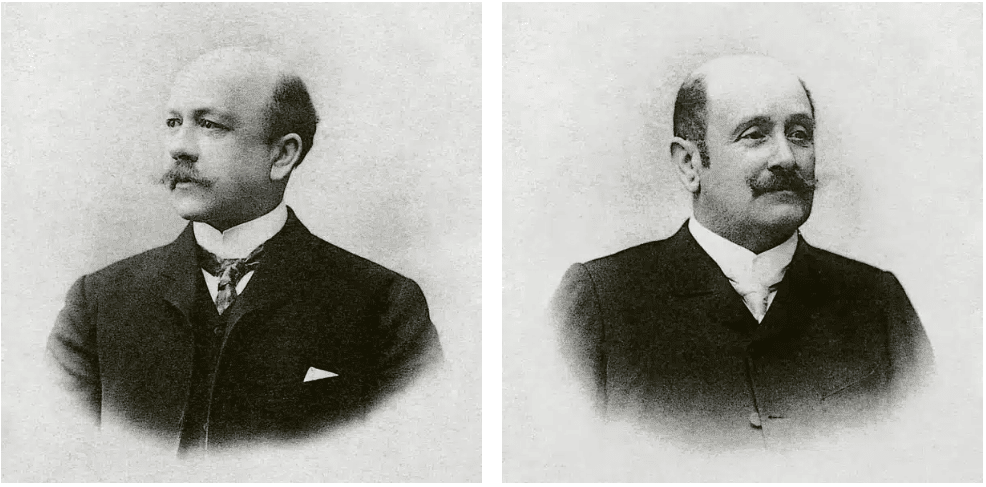
In 1879, After Louis Brandt died, his two sons Louis-Paul and César took over the family business. Both children were inspired by their father’s passion for watchmaking and absolute precision in every product. And perhaps, fate chose them to change the industry once and for all.
The birth of “OMEGA”
The year 1894 marked a huge step forward, with the Brandt brothers presenting a completely new movement that would later be known as the 19-Ligne caliber. This movement has been mass-produced using new revolutionary methods; and set new standards for watchmaking at the time. Caliber 19-Ligne is not only extremely accurate, but every parts can be replaced very easily without the need of a professional watchmaker. And it was this movement that gave birth to a combination of hand-winding and time-setting via the crown – something that is still widely used in all watches today.

The brothers called the movement “Omega,” a classic name inspired by the last letter of the Greek alphabet. They understand that mass-produced movements are the future of watchmaking. Since then, the company’s reputation has grown rapidly. The success of the 19-Ligne caliber was significant that the brothers decided to change the company name to OMEGA Watch Co. By 1903, Omega was the largest watch manufacturer in Switzerland as well as worldwide.
However, unfortunately, in the same year both brothers César and Louis-Paul died, leaving the company with 800 employees and production capacity up to 240,000 watches annually in the hands of their family members. Of the four individuals who took over the brand, the oldest was only 24 years old – who would later be considered the greatest architect Omega has ever produced – Paul-Emile Brandt.
CONQUERING THE WORLD
The following decades opened a whole new chapter in Omega’s history as the brand expanded its global distribution network, covering all six continents. Omega watches gradually became popular with watch manufacturers at the time and also with customers around the world thanks to the iconic movements that came from Switzerland. Not only famous for their extreme precision, Omega movements are also mass-produced and very easy to repair.

Omega goes beyond than just being a pioneer in precision movements. To keep up with the ages and be worthy of its role as a pioneer in watch design, in 1925, Omega introduced a completely brand new watch collection in Paris– the source of the Art Deco style. And it was also at the “Exposition Internationale des Arts Décoratifs et Industriels Modernes” in Paris that Omega won the First Prize in watch design.
Also in 1925, Omega joined hands with Tissot to form the SSIH Group (the predecessor of today’s Swatch group) after the difficulties brought by World War I. It was this relationship that saved both companies financially at the time. The SSIH Group then continued to develop many watch models that later became legendary (including Omega’s famous Speedmaster line). Since the end of World War II, Omega watches have become the people’s favorite watch brand for their excellent and highly application properties, such as precision, endurance on the battlefield, excellent water resistance and suitability when used as a military watch.

By 1931, Omega set a record for precision in timepieces when all six watches entered the competition at the Geneva Observatory with more precision than any other watches ever produced under different conditions. Since then, Omega has always been loyal to the direction and mission of the business. Today, the Master Co-Axial movement remains one of the most reliable and precise movements in the watchmaking world.
A journey of a thousand miles always begins with the first step. Over the past 90 years, watchmaker Omega always remained true to its tradition by being the official timekeeper for the Olympic Games. And it all started with a single watchmaker and thirty Omega chronographs in 1932. Until now, Omega has become the official chronograph for the event. With nearly a century worth of history, Omega has also produced many technological breakthroughs. One of which was the improved accuracy from 1/10th of a second in 1932 to 1/1000th of a second as it is today.
THE FIRST TOURBILLON MOVEMENT USED ON A WRISTWATCH
In 1947, Omega created one of the world’s first tourbillon-equipped wristwatch movements. Previously, the masterpiece of a tourbillon function often found on large pocket watches. So it was a remarkable achievement for a super-complicated function to be miniaturized and incorporated into a wristwatch. This super-complicated movement is called the Omega 30L. Only 12 watches were produced and all entered the Swiss Observatory Chronometer competition. At this competition, Omega won and later the name of the movement became known as the Omega Observatory Tourbillon. The remarkable detail about this super complicated movement is the fact that the tourbillon rotation time on the watch is 7.5 minutes instead of the usual 60 seconds.
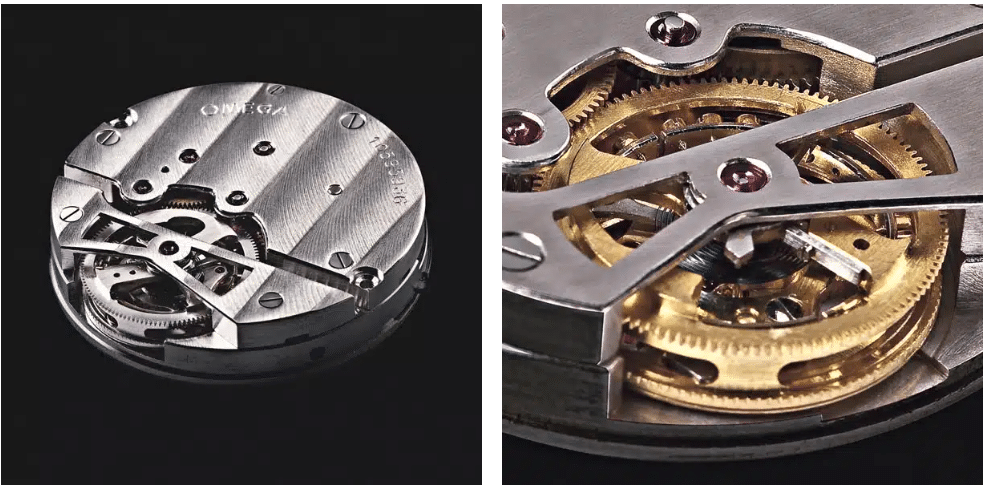
With the first version of a wristwatch equipped with a tourbillon, Omega won many prestigious awards for precision quality in the following years. Today, Omega continues on the path of pioneering and conquering new heights in the world of watchmaking and is proud to be the only brand to own the only watch in the world to be fitted with a tourbillon in the center of the watch dial.
THE BIRTH OF THE OMEGA SEAMASTER
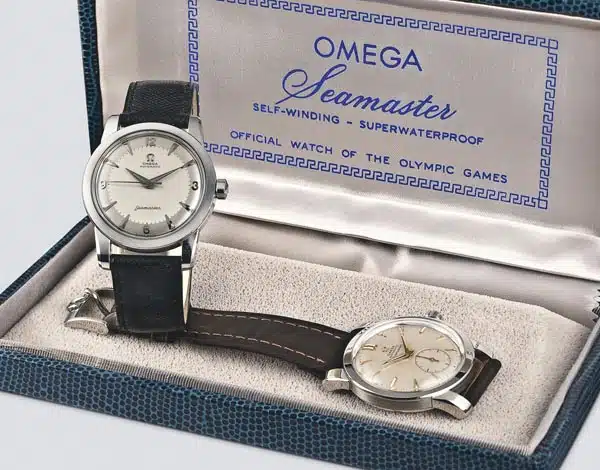
To mark the 100th anniversary of the brand, Omega introduced a completely new line of watches that has become the brand’s icon – the Omega Seamaster watch. Inspired by the Marine watches as well as their reputation for enduring through two World Wars. The Omega Seamaster is built to withstand the toughest challenges whether in the sky or in the ocean.
Until now, the Seamaster has symbolized the absolute precision of Omega movements along with outstanding water resistance. It can be said that this is a line of watches that symbolizes Omega’s outstanding watchmaking ability as well as the constant pursuit of innovation and pioneering.
THE FIRST OMEGA CONSTELLATION
Named after the eight stars at the top of the observatory, the Constellation was first showcased by Omega in 1952. Thanks to its outstanding design, meticulous finishing, extremely high quality and impossible not to mention – an incredibly precise movement inside, the Constellation quickly became the symbol of what is now known as the “Swiss Watch” as we mention it today.
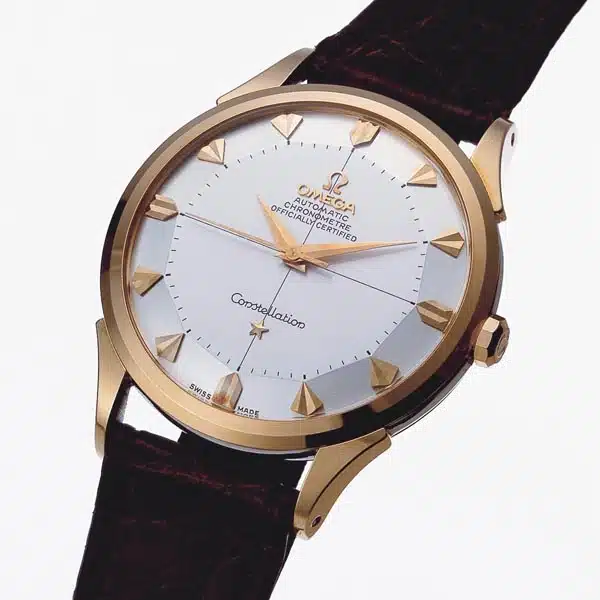
The eight stars on the back of the watch represent the eight world records for watch precision that Omega set at Kew-Teddington and the Geneva Observatory in the mid-20th century. Iconic image with lighthouse and stars as an absolute homage to the incredible precision that Constellation has been bringing to its fans.

LEGENDARY TRIO
In 1957, Omega introduced the Professional line of watches, which consisted of three watches that are by far all legendary in their own right – the Speedmaster, the Seamaster 300 and the Railmaster.

The Speedmaster is destined to be part of human history as the first pioneering watch on the wrists of astronauts while on NASA’s space exploration mission. This can be is one of the biggest symbols not only of Omega but of the entire contemporary watchmaking industry with the name “Moonwatch”. The Seamaster ushered in a new era of mysterious oceanic exploration, while the Railmaster represented Omega’s state-of-the-art anti-magnetic technology, able to resist magnetic fields of more than 1,000 gausses.
OMEGA SPEEDMASTER – TRAVEL TO THE MOON
1962 – The first watch ever to explore space
In October 1962, two and a half years before the Omega Speedmaster was officially certified by NASA to be qualified for manned spaceflight, astronaut Wally Schirra wore his own Speedmaster chronograph for the Mercury Sigma 7 space mission. Wally flew into uncharted territory and Earth’s orbit six times in a mission that lasted 9 hours, 13 minutes and 11 seconds.
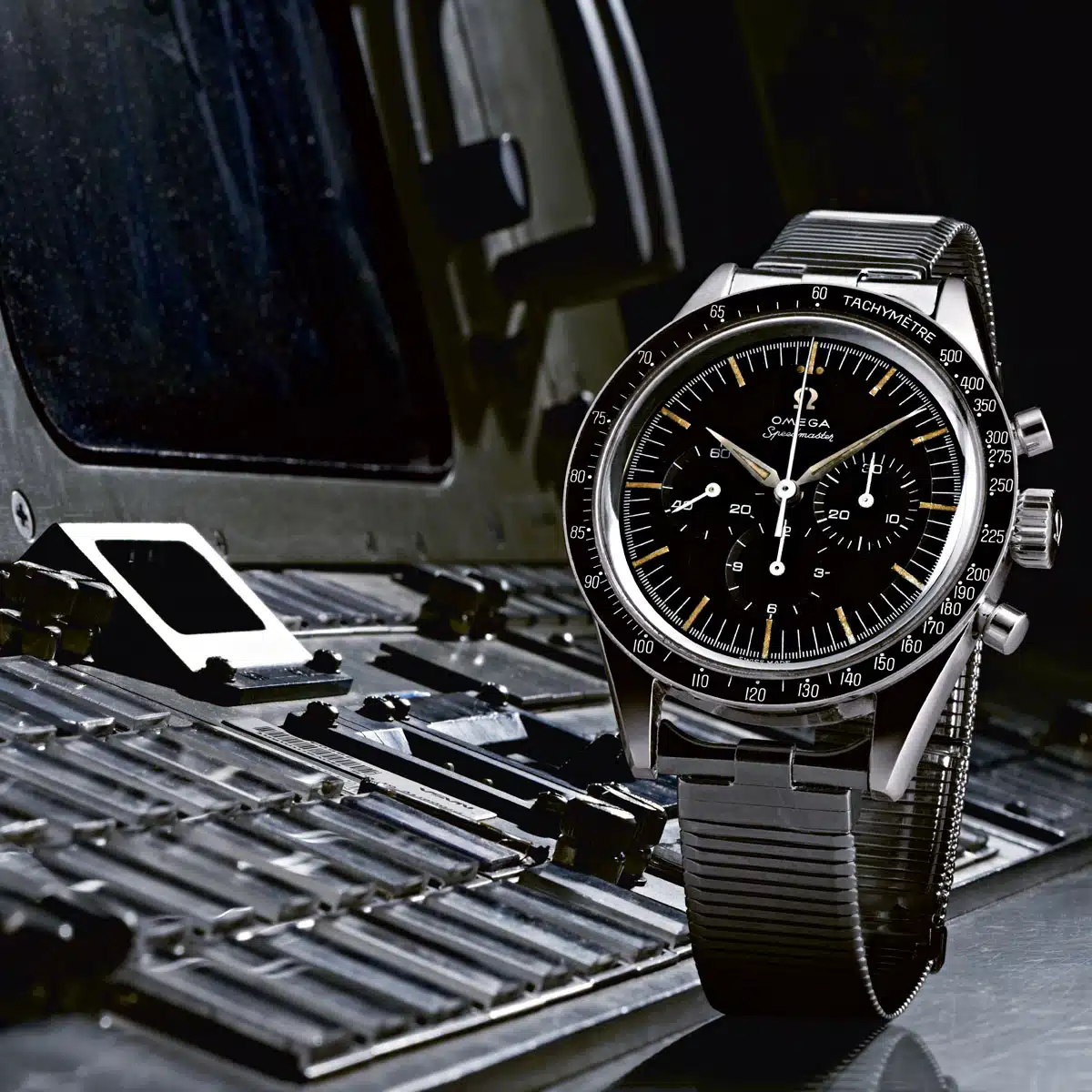
As NASA’s spaceflight program developed, Schirra continued to document his 295-hour journey into outer space. On both the historic Gemini and Apollo flights that followed, he was accompanied by an Omega Speedmaster watch.
1965 – Four Horse Race
In 1965, NASA sent out invitations to 10 different watch brands at the time to find a watch to accompany the astronauts on the upcoming mission. Omega is one of four brands that have submitted watches for NASA for quality and precision certification with the Speedmaster model. The remaining three names are Longines, Rolex and Hamilton respectively.
For some reason, Hamilton submitted a pocket watch instead of a wristwatch, and was subsequently disqualified. Rolex sends the chronograph ‘Pre-Daytona’ ref. 6238. Meanwhile, Longines sent out their 235T. Both Rolex and Longines watches used the Valjoux 72 movement while the Speedmaster was powered by the caliber 321 movement based on a movement from Lemania (then part of the SSIH Group).

The three models mentioned above all have to go through challenges that aim to destroy the watch. Some of the challenges include: 48 hours at 71℃, 4 hours at -18℃, 240 hours at a temperature varying from 20℃ to 71℃ with at least 95% humidity, six 40GS shock in six different directions.
As a result, on March 1, 1965, the tests were completed and only the Omega Speedmaster had the honor of receiving official certification for use in the historic Moon mission.
1969 – Journey to conquer the moon
The turning point in human history was recorded when the first astronauts set foot on the Moon at 02:56 GMT on July 21, 1969. Neil Armstrong made the giant leap not only for the himself, but also for the history of mankind. And of course, on his wrist is the Omega Speedmaster Professional. And as they say, the rest is history. In the years that followed, ten more astronauts set foot on the Moon, each wearing an Omega Speedmaster as an integral part of the spacesuit.

1972 – The Last Mission
The Apollo 17 mission led by Commander Eugene Cernan was NASA’s final trip to the Moon. This was the flight with a number of records, including the longest manned flight on the Moon. And once again, Omega’s iconic watch plays a vital role in this mission. At the end of the mission, a crew member who carried his personal Speedmaster engraved on the watch the words “FLOWN IN CSM TO THE MOON”, “APOLLO 17” along with his signature. On the bezel of the watch also engraved the words “HEAT FLOW EXPR” and “6 – 19 DEC 1972”. That was one of the few privately owned watches worn during the Apollo missions.
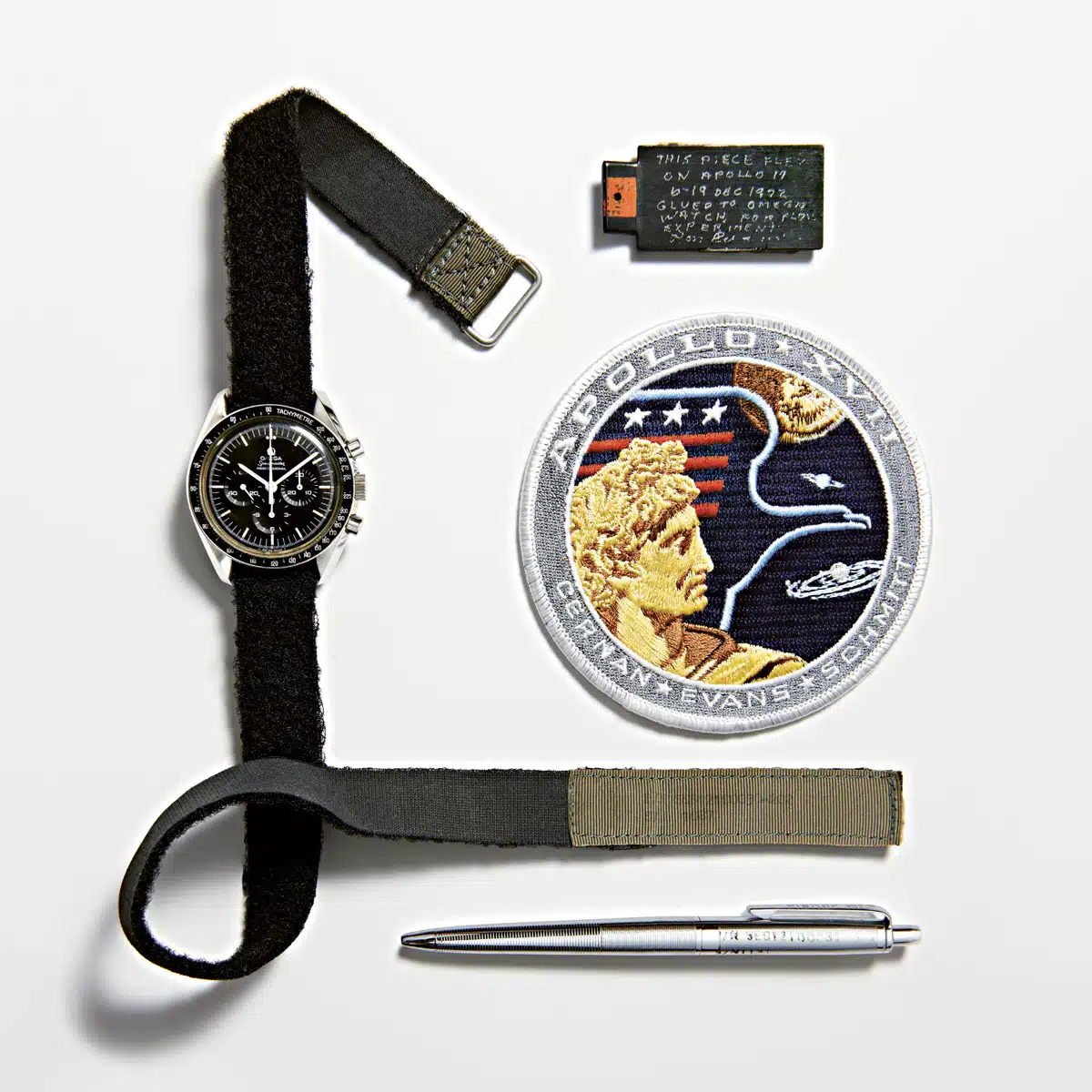
James Bond’s great assistant
Omega Seamaster took on a new supporting role in 1995 when it followed the talented spy James Bond on his journey to distant Russia to save the world. With an elegant style but still needing the flexibility and durability of specialized equipment, the Seamaster was a more suitable choice.

And in the many decades since, Seamaster has faithfully served and accompanied Bond in all his thrilling missions.
Revolution with Co-Axial escapement
1999 was not only a transitional era, but also turning point in mechanical watchmaking. Omega has introduced the Co-Axial escapement used in the Caliber 2500 movement. By using smaller contact surfaces, the Co-Axial escapement generated less friction and required less lubrication. It was the innovation that made it one of the most durable and precise movements in the watchmaking world.
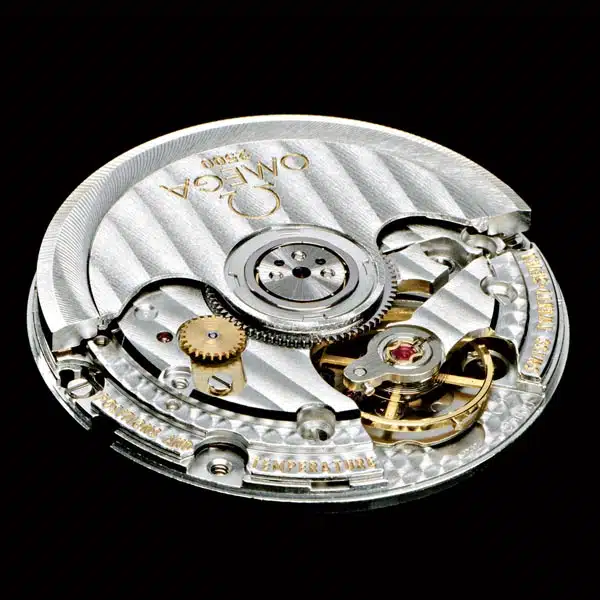
Co-Axial was developed by George Daniels himself (the world’s foremost watchmaker), the Co-Axial escapement was both a leap forward in watchmaking and a symbol of excellence of Omega’s unwavering dedication to its pioneering mission.
Omega leather watch straps at Hoa Sa
The handmade leather straps for Omega watches by Hoa Sa are the perfect combination of quality and aesthetics. Hoa Sa always chooses the highest quality leather materials to make beautiful and durable products. Each set of watch straps is made entirely by hand by Vietnamese artisans with high skill and meticulous attention to detail.

At Hoa Sa, we always have a variety of handmade leather straps available, suitable for many different Omega watch models, from traditional colors such as coffee brown, elegant black or navy blue to vibrant colors and unique as orange or red. With enthusiasm and meticulousness in every detail, Hoa Sa’s handmade leather watch straps will surely give customers a feeling of confidence, luxury and class every time they wear their beloved Omega watch.
